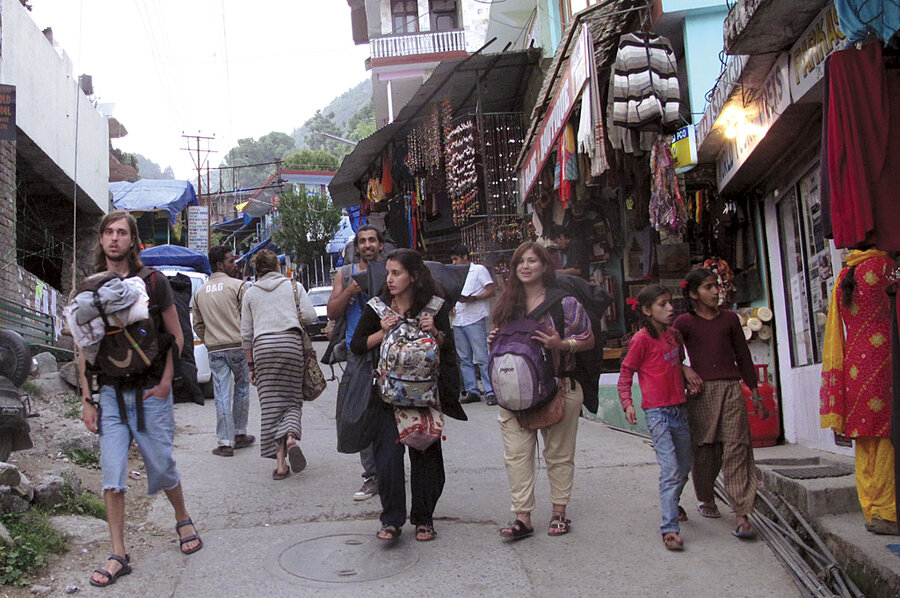The Himalayas' Little Tel Aviv
Loading...
| Dharamsala, India
• A local, slice-of-life story from a Monitor correspondent.
“Shalom” and “tashi delek,” greetings in Hebrew and Tibetan, respectively, mingle freely here in the tiny streets high up in the scenic Kangra Valley of the Indian Himalayan region. Young Israeli backpackers fresh from their military service travel the world for up to a year or more. India is a popular destination and many stick around for months enjoying the Himalayan summer. Their presence has created a “mini Tel Aviv” in Dharamsala, much to the chagrin of locals.
The two vastly different cultures have made a distinctive line through the village. On one side live mostly exiled Tibetans. Prayer flags hang on houses and monasteries and maroon-robed monks and nuns chant prayers as they circle the Dalai Lama’s residence and main Buddhist temple.
A mile away is the trail head of trek routes frequented by Israeli backpackers. Cafes and restaurants cater to the tourists with Hebrew signboards and menus that include hummus. Phone booths show Tel Aviv time and Internet cafes supply Hebrew keyboards. Hundreds of Israelis participate in Shabbat, the Sabbath that begins Friday evenings.
The increasing presence of the backpackers worries some residents. “Israelis come as tourists and in large number but all live as settlers, as if it’s their own homeland,” says Yonten Gyatso, a Tibetan gem-shop owner.
Many locals feel they will lose their cultural distinction as more young backpackers visit what they call the “Israelis’ Indian mecca.”
The increasingly “diverse culture around us is making us lose our own identity,” says Munna Thakur, a tribal Indian, as he stands in the middle of restaurants and cafes adorned with Jewish names.





